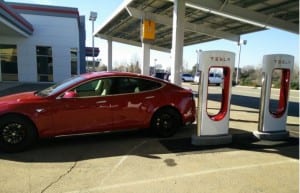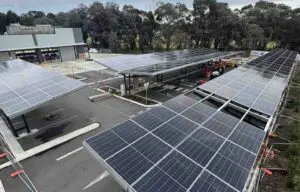2018 has brought with it a new debate on the benefits or otherwise of electric vehicles.
Federal energy minister Josh Frydenberg kicked things off with a press release and several interviews in January.
In these, Frydenberg highlighted the inevitable growth in the number of EVs on Australia’s roads, growing consumer demand, the emergence of a growing second-hand fleet, courtesy of corporate and government fleet sales rolling over, and even conceded that “the fuel cost of a 300-km journey in an electric vehicle is currently about a third of that of a petrol-fuelled car”.
It seems clear that he is a fan and likes the idea.
On the other hand, we have Liberal MP Craig Kelly’s ignorant rant on ABC radio and comments to The Australian claiming electric cars “created more carbon dioxide pollution than petrol vehicles.”
Kelly, you may remember, is the same guy who said “renewable energy is killing people this winter because subsidies are driving up power prices.” He is also a renowned climate sceptic and a die-hard Tony Abbott supporter, according to various reports, so it shouldn’t really be a surprise he would be the source of such a vitriolic and ignorant spray about EVs.
Not being satisfied with radio and news paper coverage he has also published a number of equally alarmist pieces on his Facebook page, including calling for an EV road tax, a pre-emptive strike on any form of (non-existent) subsidy for EVs and even a piece claiming EVs would kill people because they are too quiet.
I don’t know what EV nightmare Craig Kelly had over Christmas, but clearly it scared the bejeesus out of him. So, lets take a look at some real-world facts. Kelly raised several issues in the case against EVs and here is an alternative perspective:
Claim: EV’s have a higher carbon footprint
Kelly’s argument on this issue was based on the government’s Green Vehicle Guide. His argument was that the CO2 emissions from a Tesla were higher than a Corolla, according to the GVG.
Firstly, comparing a small budget car to a large luxury car is puerile, because they are a different class of vehicle. Secondly, it assumes that Tesla owners charge from coal-fired energy.
This ignores that blindingly obvious fact that Tesla owners are forward thinkers and like to save money and therefore are extremely likely to use Green Power or to recharge from their own solar system, reducing their emissions to virtually zero.
The GVG also happens to use outdated data from when Australia’s electricity emissions intensity was higher than it is a today .
Of course, the situations will vary – – but simply put, he cherry picked the extreme and least likely cases to make a point. In the majority of cases and studies from around the world show EVs clearly produce less emissions per km.
Claim: EVs have a higher life cycle emissions footprint
When Kelly was challenged on emissions per km in the ABC interview, he diverted the argument, claiming that life-cycle emissions were the problem, too, and that somehow EVs have a higher carbon footprint than ICE cars.
This is kind of bizarre, given that there are hundreds less components required to build an EV and also that his own oft-quoted source of all truth on EVs (the GVG) explicitly says:
“To date examinations of lifecycle environmental impacts of conventional vehicles indicate that the largest proportion of energy consumed (and associated greenhouse gas emissions) in a cars normal lifecycle occurs during its operational (use) phase, and not from its production, nor the embodied energy in the materials from which it is made.
“While this proportion will vary from manufacturer to manufacturer, plant to plant, model to model, and with fuel type, various studies report that the vehicle operation phase (at least for a conventional vehicle with an internal combustion engine) consumes around 85-90% of life-cycle energy use.
“At this stage we are not aware of significant life-cycle data for electric vehicles or plug-in hybrids. Most recent studies are indicating that the majority of primary energy consumption for electric vehicles also occurs during vehicle use.”
So, Kelly is just making this rubbish up.
Claim: EVs get unfair subsidies
Having watched the EV market for a few years now and run a boutique EV business for a while, I can tell you that subsidies for EVs are virtually non-existent.
A few states offer very small stamp duty discounts and if you are one of 20 per cent or so of all Australian EV owners to own a Tesla then you can also get a small luxury car tax discount. I was unable to get any discounts at all for my EV or the few I helped sell.
However, what Kelly failed to mention was that this type of rebate is also available to conventional vehicles with low fuel consumption (note however the value cut off is slightly different).
Looking back at the total conventional vehicle fleet in Australia, the fuel tax subsidy alone is steadily increasing and was $6.3 Billion a year in 2017/18.
There are also several billion dollars more paid to various fuel related industries. So conventional vehicles enjoy the benefits of a variety of very large subsidies in Australia already. EVs do not.
It is notably true that all road users pay a road tax through petrol fuels, which theoretically contributes substantially to the upkeep of transport infrastructure and all I can say is that as road user I’m happy to pay my fair share for my impact if I’m not currently being accounted for.
However, I do want to see an evolution to the way impact is measured and charged because our current rules are completely outdated.
Some of the unexpected benefits of EV ownership I have discovered over five years which directly relate to this include significantly less tire and brake wear, no oils or coolants to pollute, no heat gain and zero fumes. Perhaps most importantly for road wear however is the gearless, ultra-smooth linear drive.
A linear drive eliminates the “pulses” of energy delivered through changing gears and the accompanying surges in torque, and regenerative breaking has the same lower wear and tear effect on de-acceleration. This is often seen through ripples in bitumen roads where heavy traffic is frequent.
So, any way you measure it, EVs have an infinitesimally smaller rate of subsidy, if any, at the present time. As an emerging industry of the future, arguably this sector should receive support like so many others have. But a concocted panic was all we heard from Kelly on this issue.
Claim: EVs will kill you because they are quiet
Now, in part, I agree with Craig Kelly on this issue. EVs are notably quieter than conventional vehicles and especially at low speed, when road noise from tires and drives are minimal.
There are few studies on the topic but one I found (slightly outdated but well written and researched) described the risks well I thought.
In a nutshell, the majority of the risk is at less than 16km/hour and for pedestrians. Above those speeds road, drive train and electronic noise makes them almost the same as conventional vehicles from a pedestrians perspective. It recommended an audible system for EV’s at low speed that simulated vehicle noise which pedestrians are accustomed too and some manufacturers do this.
Now in principle, I’m not necessarily against this.
However, I would make two points. Firstly, vehicle noise and road noise limits have been steadily declining for many years, so roads and vehicles are substantially quieter than they used to be; a trend that will continue.
If we are going to force EVs to make noise, the standards should reasonably reflect a steady decline in the noise requirements over time alongside conventional vehicles.
Secondly, pedestrians are inevitably learning to adjust their behaviour in response to EVs. How do I know that? I have now travelled more than 50,000km on my EV and predominantly in urban environments.
I have probably passed hundreds of thousand of pedestrians and talked about my EV to thousands more. The vast majority of people I come into contact with on the road stare in bewilderment at my EV and are intrinsically aware of its presence because it’s so unusual.
Thanks to Elon Musk the entire planet now knows about electric cars, too, which doesn’t hurt.
I would argue that people are starting to regularly see them and the majority understand the simple equation that if they are quiet you’ll have to adapt beyond audible alerts to remain safe as a pedestrian. Humanity already adapts to exactly the same issues for the billions of bicycles around the world as well as electric trams, trains and all manner of other electric utility vehicles.
In addition, although only anecdotal, I know that as an EV user with a new technology I present this risk – and I adjust my driving accordingly everywhere I go. I do exactly the same thing when I swap to my bicycle and ride on roads around pedestrians.
Knowing that I should not expect to be heard at all is my responsibility, and I can therefore mitigate the vast majority of this risk by just driving a little differently. I also believe that the vast majority of other EV owners are equally tuned into this simple fact.
So, sure, if we must in the interim, let’s have smart audible alert systems in low speed situations. However, let’s also educate all road users to the changes and continue to drive down overall road noise.
Kelly and the other naysayers’ solution of “lets just stay really friggen noisy so we don’t kill people” is the dumbest thing I’ve ever heard.
Claim: EVs aren’t really cheap to run
Look, this is just dumb.
Yes, EVs are more expensive to purchase now, but they are plummeting in cost and in some cases (like my own) are almost on par. Even with their premium, today almost every EV owner will benefit from substantially lower operational cost and frankly, far simpler ownership with less moving parts.
The fuel versus energy cost savings are roughly 1/3rd to 1/10th of the cost depending on circumstances, which increasingly quickly offsets the up front cost penalty. In my case, I estimated that the price premium I paid would be offset in around five years and was very happy with that. As it turns out, it’s actually going to be even less than that, due to improvements in the short time I have had my vehicles.
Yep, there are some potential variables. Yep, the batteries will not last infinitely. We have limited experience to go by on how this will pan out in real life – but in fact, we do now have millions of EVs on the roads globally, and each year brings new lessons.
Kelly’s carry-on about this issue is the exact same argument we face (from him and his cohort) against renewables. Just like renewables, the economic reality is they are cheaper and they will happen, despite antiquated false opinions, simply because consumers want cheaper energy costs and – in the case of EVs – less ownership hassles and a better driving experience.
Kelly’s claim that EVs are not cheaper to own is outdated garbage.
The EV case study
I’ve tried to highlight the basic theory of why I think anti-EV people are misguided. Scenarios and results will certainly vary and direct comparisons are not easy, but I can give you direct evidence of my own personal experience as one example.
The tabulated results are below.
I previously owned a 2001 Moto Guzzi V11 Rosso Mandello and now own a 2014 Zero DS, an all-electric motorbike. Interestingly, the capital cost of both vehicles was almost the same – around $24,000.
The Guzzi was a limited edition Italian 1100CC sports tourer and was relatively expensive as a consequence. The Zero is a cutting edge production EV motorcycle designed primarily for city use with 11.4kWh of capacity and also expensive as a consequence.
My case probably favours my EV a little because the Guzzi was a large capacity and heavier bike so I do acknowledge that more modern smaller bikes would have a better result, although the fuel consumption is not significantly different in this performance class.
In terms of performance, other than top speeds in excess of 150km/h, my Zero performs similarly to my previous bike in terms of acceleration and torque. In both cases, 98 per cent of my riding was in and around Sydney.
I acknowledge that the bikes have totally different design intent, but I think it works out pretty even given that both equally suffer limitations and handicaps – the Zero for long-range use and the Guzzi around town.
Comparing the overall financial, energy and performance characteristics of conventional petrol vehicles to EVs requires a bunch of formulse which can and do vary depending on location, circumstance, and most importantly, the point in time at which you use the factors because they change.
So, I’ve used the best ones I could find today, tried to be reasonable and fair and, in my cases, benchmarked it against my experience in the real world. I’m satisfied that what it says it pretty close to what I’ve experienced.
The short version is that I have compared two vehicles with similar “seat of the pants” performance and price.
Over 45,000km the Guzzi would have cost $6,206 in fuel and the Zero cost was $675, assuming you were paying for the energy, which I mostly don’t. I would have used 3,879 L of petrol or 2,250 kWh of electricity.
The Guzzi would have created around 6,030 of kG of CO2 and assuming 100 per cent coal-fired electricity, 373kG Co2 to recharge the Zero.
| Guzzi V11 | Zero DS | |
| Weight kG | 219 | 179 |
| Top speed km | 213 | 153 |
| G Co2 per Km | 134 | 8.3 |
| Max Torque Nm | 94 | 92 |
| Max Power kW | 66 | 40 |
| Energy conversion efficiency % | 27 | 90 |
| Range consumption km/L (equiv) | 11.60 | 181 |
| Standing 1/4 mile Sec | 12.2 | 14 |
| 0-96kmh time Sec | 5.7 | 5.2 |
| Fuel consumption L/100km (equiv) | 8.62 | 0.55 |
| Energy consumption kWh/100km (equiv) | 28.3 | 8.64 |
| kG per kW | 3.2 | 4.5 |
| kG per Nm | 2.3 | 2.0 |
| L/km equiv | 0.09 | |
| kWh/km equiv | 0.05 |
The maintenance and servicing cost of the Zero has been a few hundred dollars (belt, pads, brake fluid) excluding modifications and a couple of glitches I had.
The Guzzi would have cost around $3000 over that time in tyres, oils, spark plugs air filters, pads, fluids and minor servicing costs again excluding modifications or glitches.
So, I win big-time, Craig Kelly, in so many ways with EV ownership – and I’m pretty confident that I’m not on my Pat Malone there. Which is exactly why everyone else in the world is so excited about EV’s. Except you of course.
Final word
I just want to add a final word on this topic, which really bewilders me, and that is this:
Energy and EVs are inextricably linked. The more EVs on our roads, the more energy is required to service them (offset of course by reduced reliance on 100 per cent imported fuel).
A variety of federal and state entities make a lot of money through the provision of energy already (Snowy Hydro, State owned Transmission and Distribution companies, coal royalties and even a retail JV or two like Red Energy).
We can make energy in Australia but we can’t make fuel. EVs convert around 90 per cent of the energy input into motion, compared to around 20-30 per cent for conventional engines, so they are vastly more resource efficient.
The nice thing about EV demand is that it can be flexible, so it can add load to lumbering central fired generators when it’s needed and in the future, can be used as a distributed demand control or energy agent. So, the government-owned energy utilities will make more money the more EVs there are – and that’s before (if) they build Snowy 2.
Craig Kelly’s anti-EV position is costing the government millions in future potential revenue!
Kelly has argued that the cost of the infrastructure should not be subsidised and that owners should pay. Well guess what, not only do the majority of owners do exactly that (at home) but there is a massive opportunity for energy providers (including government) to make money by enhancing that infrastructure.
It’s a no-brainer to me.











